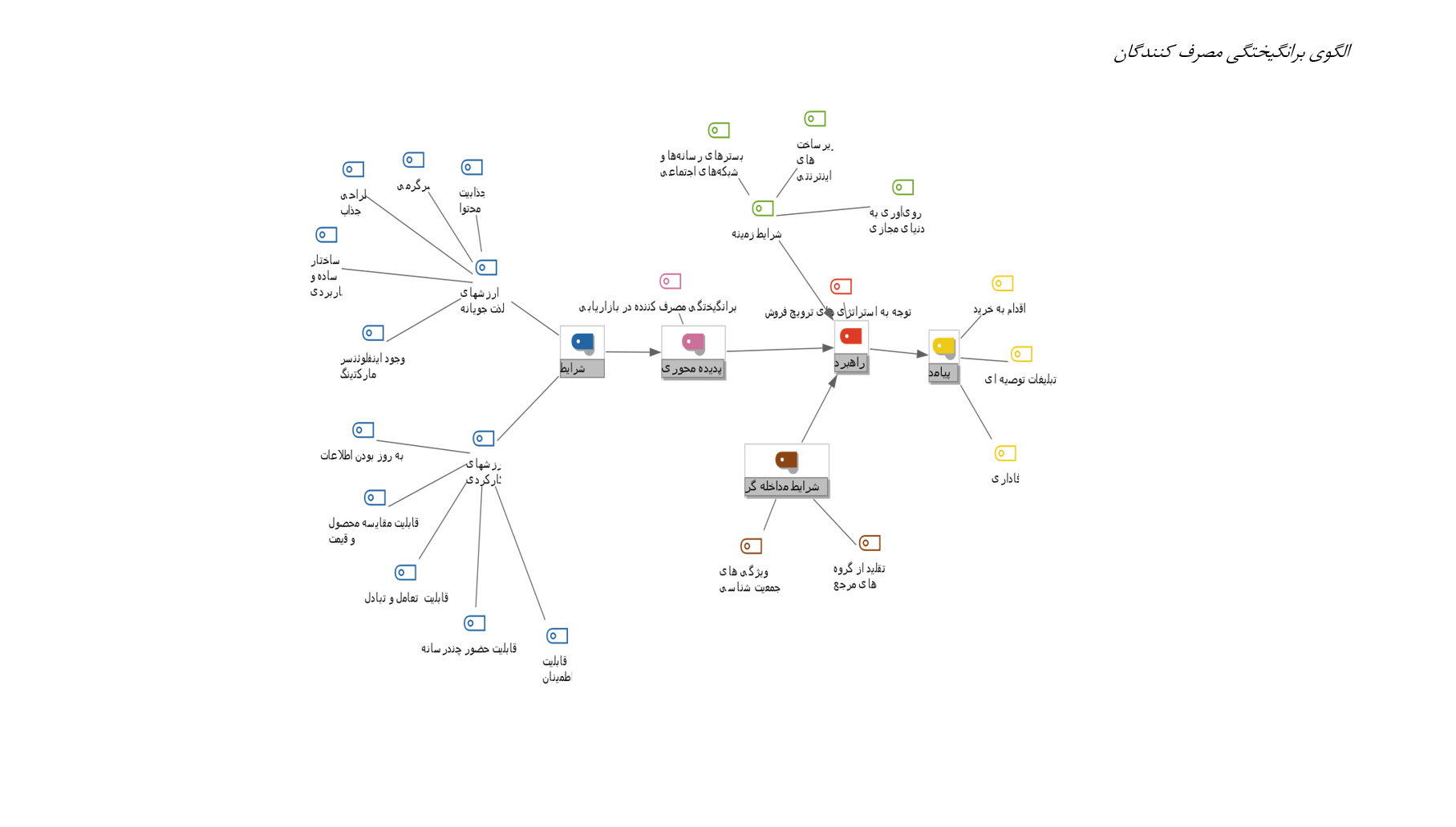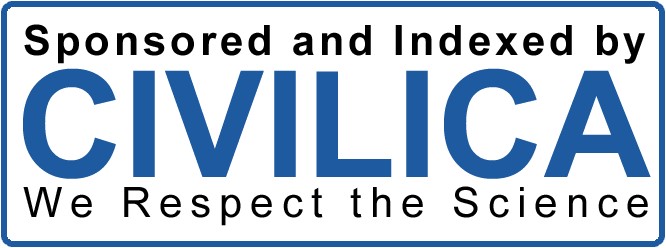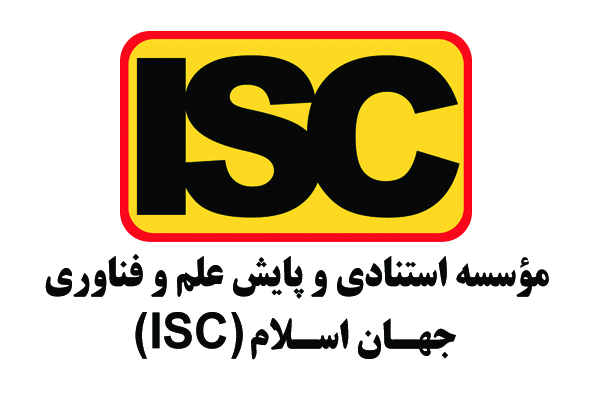شناسایی ابعاد و مولفه ها برانگیختگی مصرفکننده در بازاریابی دیجیتال و نقش میانجی استراتژیهای ترویج فروش (مطالعه موردی مشتریان دیجی کالا و فروش اینستاگرامی)
کلمات کلیدی:
برانگیختگی مصرفکنندگان, بازاریابی دیجیتال, رفتار مصرفکننده, ارزش لذتگرایانه, ارزش کارکردیچکیده
بازاریابی دیجیتال از طریق رسانههای اجتماعی و تلفن همراه زندگی روزانه میلیونها نفر را متحول کرده و گسترش شیوه-های رایج ارتباط در رسانههای اجتماعی اغلب منجر به شکلگیری روابط با مشتریان شدهاست. هدف از پژوهش حاضر شناسایی و بررسی ابعاد و مؤلفههای برانگیختگی مصرفکنندگان در بازاریابی دیجیتال به روش آمیخته (کمی- کیفی)می باشد . روششناسی در فاز کیفی نظریه داده بنیاد و دادههای لازم از طریق مصاحبه عمیق و نیمه ساختاریافته با 9نفر از خبرگان بازاریابی دانشگاهی و صنعتی و دادههای ثانویه به دست آمدهاست. نتایج حاصل از تحلیل دادهها با طی نمودن سه مرحله کدگذاری باز، محوری و انتخابی، توسط نرمافزار Maxqda تجزیه و تحلیل شدهاند و در نهایت 98کد، 20مفهوم و 9مؤلفه در قالب مدل پارادایمی ارائه شدهاست. در بخش کمی روش تحقیق توصیفی- پیمایشی است و ابزار جمع آوری دادهها پرسشنامه جامعه آماری این بخش کاربران فعال در فضای مجازی (اینستاگرام و سایتهای فروش آنلاین ) در نظر گرفتهشده که حجم آن طبق فرمول کوگران برای جامعه نامحدود برابر 384نفر انتخاب شدهاست. نتایج پژوهش نشان می دهند منافع لذت جویانه و منافع کارکردی به عنوان شرایط علی و اثر گذار بر ایجاد پدیده محوری برانگیختگی معرفی شدند و از طریق راهبرد ها ترویج به پیامد های تمایل به خرید ، اقدام به خرید ، وفاداری و تبلیغات توصیه ای منجر می شوند.همچنین روی آوری به دنیا مجازی و زیر ساخت های اینترنت شرایط زمینه ای و عوامل جمعیت شناختی به عنوان مداخله گر شناسایی شدند.نتایج نشان می دهد که مدل حاصل از برازش خوبی برخوردار است.
دانلودها
مراجع
Ainsworth, A. B., Bonifield, C. M., & Elhai, J. D. (2021). Modeling consumer engagement on social networking sites:
Roles of attitudinal and motivational factors. Journal of Retailing and Consumer Services, 59.
https://doi.org/10.1016/j.jretconser.2020.102348
Akbari, M., Noe Pasand Asil, S. M., & Amiri, N. (2015). Impact of Consumer Beliefs on Their Online Purchasing
Behavior. Quarterly Research Journal of Modern Marketing Research.
https://nmrj.ui.ac.ir/article_17795_0.html?lang=fa
Al-Khasawneh, M. H., Al-Haddad, S., Mbaideen, R., Ghazi, R., Irshaid, T., & Alnaimi, H. (2024). Investigating the
impact of social media marketing on research online and purchase offline for fashion luxury brands. International
Journal of Business Excellence, 32(1), 25-49. https://doi.org/10.1504/ijbex.2024.135933
Alam, M. S. A., Wang, D., & Waheed, A. (2019). Impact of digital marketing on consumers' impulsive online buying
tendencies with intervening effect of gender and education: B2C emerging promotional tools. International Journal
of Enterprise Information Systems, 15(3), 44-59. https://doi.org/10.4018/IJEIS.2019070103
Bajeja, D. N. (2024). Digital Marketing Strategies to Improve Customer Experience and Engagement. Jier, 4(1).
https://doi.org/10.52783/jier.v4i1.601
Bamm, R., Helbling, M., & Joukanen, K. (2018). Online Branding and the B2B Context. In N. Koporcic, M. IvanovaGongne, A.-G. Nyström, & J.-Å. Törnroos (Eds.), Developing Insights on Branding in the B2B Context (pp. 163-
. Emerald Publishing Limited. https://doi.org/10.1108/978-1-78756-275-220181009
Brown, M., Pope, N., & Voges, K. (2003). Buying or browsing? An exploration of shopping orientations and online
purchase intention. European Journal of Marketing, 37(11/12), 1666-1684.
https://doi.org/10.1108/03090560310495401
Busca, L., & Bertrandias, L. (2020). A framework for digital marketing research: investigating the four cultural eras of
digital marketing. Journal of Interactive Marketing, 49, 1-19. https://doi.org/10.1016/j.intmar.2019.08.002
Golabchi, H., Kiaee, M., & Kameli, M. J. (2024). Designing a Superior Service Delivery Model in Education to Enhance
Public Satisfaction [Research Article]. Iranian Journal of Educational Sociology, 7(1), 189-197.
https://doi.org/10.61838/kman.ijes.7.1.18
Istrefi-Jahja, A., & Zeqiri, J. (2022). The Impact of Digital Marketing and Digital Transformation on Brand Promotion
and Brand Positioning in Kosovo’s Enterprises. ENTRENOVA - ENTerprise REsearch InNOVAtion, 7(1), 244-255.
https://doi.org/10.54820/UPQN1850
Kau, A. K., Tang, Y. E., & Ghose, S. (2003). Typology of online shoppers. Journal of Consumer Marketing, 20(2), 139-
https://doi.org/10.1108/07363760310464604
Kingsnorth, S., Nik Seresht, A., Raeisi, M. H., & Nik Seresht, F. (2019). Digital Marketing Strategy. Marketing
Publications. https://www.amazon.com/Digital-Marketing-Strategy-Integrated-Approach/dp/0749484225
Komodromos, M., & Papaioannou, T. (2018). Influence of online retailers' social media marketing strategies on students'
perceptions towards e-shopping: a qualitative study. International Journal of Technology Enhanced Learning, 10(3),
-234. https://doi.org/10.1504/IJTEL.2018.092705
Krishen, J., Kumar, V. K., Rahman, M. M., Raman, R., Rauschnabel, P. A., Rowley, J., Salo, J., Tran, G. A., & Wang,
Y. (2020). Setting the future of digital and social media marketing research: Perspectives and research propositions.
International Journal of Information Management. https://doi.org/10.1016/j.ijinfomgt.2019.09.001
Masrianto, A., Hartoyo, H., Hubeis, A. V. S., & Hasanah, N. (2022). Digital Marketing Utilization Index for Evaluating
and Improving Company Digital Marketing Capability. Journal of Open Innovation: Technology, Market, and
Complexity. https://doi.org/10.3390/joitmc8030153
Mirani, U. (2024). Analysis of The Digital Marketing Communication Strategies from A Business Perspective. South
Asian Journal of Operations and Logistics, 3(2), 168-179. https://doi.org/10.57044/SAJOL.2024.3.2.2436
Pappas, I. O., Giannakos, M. N., & Sampson, D. G. (2016). Making Sense of Learning Analytics with a Configurational
Approach. Proceedings of the workshop on Smart Environments and Analytics in Video-Based Learning
(SE@VBL), LAK2016,
Pappas, I. O., Kourouthanassis, P. E., Giannakos, M. N., & Lekakos, G. (2017). The interplay of online shopping
motivations and experiential factors on personalized e-commerce: A complexity theory approach. Telematics and
Informatics, 34(8), 730-742. https://doi.org/10.1016/j.tele.2016.08.021
Rahmani, N., Naderi Nasab, M., Taheri, M., & Biniaz, S. A. (2024). The Future of Sports Industry: AI and Economic
Transformations. AI and Tech in Behavioral and Social Sciences, 19-29.
https://journals.kmanpub.com/index.php/aitechbesosci/article/view/2876
Sabihaini, S., Astuti, S., Permana, R. I., & Marita, M. (2021). Influence of Digital Marketing, Knowledge of Information
Technology On the Financial Performance of Small and Medium Enterprises (SMEs). RSF Conference Series:
Business, Management and Social Sciences, 1(3), 172-178. https://doi.org/10.31098/bmss.v1i3.316
Stephen, A. T. (2016). The role of digital and social media marketing in consumer behavior. Current opinion in
psychology, 10, 17-21. https://doi.org/10.1016/j.copsyc.2015.10.016
Sun, R. (2024). The Impact of Large-Scale Media on Online Marketing. SHS Web of Conferences, 181, 04015.
https://doi.org/10.1051/shsconf/202418104015
Tsimonis, G., & Dimitriadis, S. (2014). Brand strategies in social media. Marketing Intelligence & Planning, 32(3), 328-

دانلود
چاپ شده
ارسال
بازنگری
پذیرش
شماره
نوع مقاله
مجوز
حق نشر 2024 تکنولوژی در کارآفرینی و مدیریت استراتژیک

این پروژه تحت مجوز بین المللی Creative Commons Attribution-NonCommercial 4.0 می باشد.










